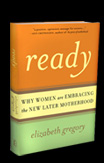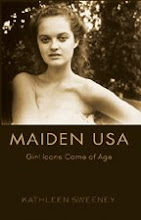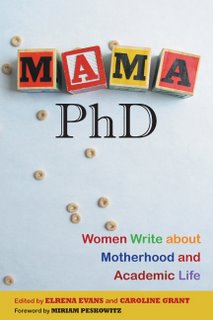




Before I moved to Los Angeles a little over a year ago, I had never heard people speak with complete lack of irony about their television-watching habits, certainly never academics. Among the revelations I’ve experienced since moving one of the biggest has been realizing how serious so many people are about what’s on the tube. In La-La Land, of course, because so many work within this industry.
What a pleasure to then discover Merri Lisa Johnson’s book Third Wave Feminism and Television: Jane Puts It in A Box with its feminist counter to what’s seen on the screen (see below). The subtitle riffs off of one of Johnson’s previous books Jane Sexes It Up. This anthology covers many of the cable favorites from the past decade: The Sopranos, The L Word, Six Feet Under, and Queer as Folk, among others, and a show that has spawned its own subgenre of academic inquiry: Buffy the Vampire Slayer.
In her intro “Ladies Love Your Box: The Rhetoric of Pleasure and Danger in Feminist Television Studies,” Johnson harkens back to the now classic essay “Visual Pleasures and Narrative Cinema” by Laura Mulvey and the complicated, gendered relationships long explored between pleasure and spectatorship. Johnson compellingly outlines her own position in both settling on the couch for a night of cable and wrestling with the theoretical assumptions this act also contains, particularly as a third-wave feminist. She considers how television is now embracing characters who can be identified along a range of sexual positions and feminist roles and the complicated relationship the viewer enters into by watching. The book’s contributors explore how plotlines, characters, and thematic twists can be considered progressive as they look through the lens of feminist and queer theory and the scope of cultural studies.
In “Primetime Harem Fantasites: Marriage, Monogamy, and A Bit of Feminist Fanfiction on ABC’s The Bachelor” Katherine Frank offers analysis of the show and its popularity with the imagined alternative ending of a non-monogamous choice or critique of the strictures of heterosexual monogamy that celebrates the finding of “the One.” Laura Stemple’s essay on “HBO’s OZ and the Fight Against Prisoner Rape: Chronicles from the Front Line” opens with a narrative about her work as former executive director of Stop Prisoner Rape, “a national human rights organization working to end the sexual abuse of men, women, and youth behind bars.” As the show OZ aired, Stemple finds herself stunned by the “gloves-off nature of OZ” with realistic depictions of the effects of prisoner rape, and the psychological dimension of abuse prisoners experience and how this brought victims forward to her center. She notes that OZ‘s sixth and final season “ran in 2003, the same year in which the first federal legislation to address prisoner rape, The Prison Rape Elimination Act” was signed into law.
On a different note, in Candace Moore’s “Getting Wet: The Heteroflexibility of Showtime’s The L Word” she writes how the show accesses a range of methods to make “straight tourists into queer-friendly travelers” incorporating what she calls “the tourist gaze” sometimes by craftily using “immersion and distance” through camera work and the show’s visual rhetoric.  Cultivating “the tourist gaze,” Moore says, “in politically positive ways” the show moves along an axis between queer and straight viewers allowing for access of “multiple desires and sensibilities.”
On the cusp of big-movie release season, nevermind the plethora of holiday “specials,” Johnson’s book offers welcome relief as its astute critics offer analysis and provocative perspectives on television’s influences. On this holiday weekend, good feminist, media watching to all.




 If I could think of a topic that travels around the conversations of most women I know, the choice to have a child, and when, often lives pretty near the top of the list. Following it comes a litany of concerns: how to juggle career, partnerhood, personal and professional ambitions, and more.Â
If I could think of a topic that travels around the conversations of most women I know, the choice to have a child, and when, often lives pretty near the top of the list. Following it comes a litany of concerns: how to juggle career, partnerhood, personal and professional ambitions, and more. 



 Lisa Belkin, ever on top of the nuances and foibles of dating, mating and family making in our time, points in
Lisa Belkin, ever on top of the nuances and foibles of dating, mating and family making in our time, points in  Hello again, Girl w/Penners! I’ve been sequestering myself this fall as I finish work on a book of my own but I am very glad to jump back into getting the word out about some of the amazing new books that explore the realities of contemporary women’s lives.
Hello again, Girl w/Penners! I’ve been sequestering myself this fall as I finish work on a book of my own but I am very glad to jump back into getting the word out about some of the amazing new books that explore the realities of contemporary women’s lives.